As booze spend has transferred from hospitality to grocery, brands have looked to capitalise with a raft of spinoffs and sub-brands. The successful ones boost profit margins and reinvigorate categories – but there are pitfalls too. So what’s the secret to creating a spinoff that hits the right notes?
Download the PDF version of this report
Social distancing seems to have escaped Britain’s booze brands. While shoppers for the past 16 months have been staying six feet apart, alcohol sectors have, in contrast, been mingling and merging. Suppliers are increasingly moving beyond their core territories as they seek to keep up with fast-moving trends.
Since January 2021 alone, alcopops veteran Hooch has added spirits – and so has Kopparberg (again). Taylor’s Port has launched posh RTDs, while Asahi and Bud Light have jumped on the hard seltzer trend.
So why is this proving such a popular trend? And what marks out a successful spinoff from a failure?
Given the events of the past year, it’s no wonder booze brands are looking to shake things up. Amid the woes of the on-trade and travel retail, grocery has become an ever more competitive – and important – area of the market. This year’s Britain’s Biggest Alcohol Brands shows the top 100 have added a collective £2.34bn to their value in retail. More than 70 saw double-digit growth or higher, while just 12 declined [NielsenIQ 52 w/e 15 May 2021] as at-home drinking became the norm for much of the pandemic.
Click for a rundown of the 100 biggest alcohol brands in Britain
Now, with the UK’s hospitality industry reopened and summer at its height, a thick wedge of sales looks certain to shift back to the on-trade. But brands are hoping to maintain success in grocery by broadening their portfolios, suggests Tom Smith, marketing director at Accolade Wines.
Spinoffs can get a brand in front of a new audience and expand the number of occasions it plays in, he says. They also act as a recruitment tool for the brand’s native category – like the Rosé Seltzer range Accolade added to Echo Falls last August, for example. “By diversifying, it will help that specific [brand], but ultimately we want to bring people back into the wine category.”
Plus, with suppliers eager to recoup losses from on-trade shutdowns, the right spinoff can be effective in boosting profit margins, according to Chris Ellis, former Pernod Ricard commercial director and founder of consultancy Barhatch & Box.
“Wine and beer are both terrible from a profit point of view and, to a degree, so is cider,” he says. In some ways, that can be addressed with new variants. Ellis notes that brewers and winemakers are “trying to grow premium”. But they are still aware “the golden goose is sitting in other categories”. And the real golden goose is spirits.
In March, the Financial Times reported that “global sales of tequila, vodka and liqueurs outperformed the broader alcohol market last year, as housebound consumers took to sipping high-end spirits and mixing their own cocktails”. That was certainly evident in the UK retail market, where shoppers spent an extra £566.8m on spirits [NielsenIQ 52 w/e 5 September 2020].
“The spirits market has been in structural growth for the past five to 10 years, very much driven by craft and premium,” says Ellis. “Value has grown faster than volume, so not only is the market in growth but supplier profitability is really strong.”
Which explains why spirits suppliers aren’t exploring the beer and wine markets, but the likes of Hooch and Kopparberg have pivoted into hard liquor.
Winners and losers: the key trends
- Premium lagers have smashed it: San Miguel, Stella and Budweiser have added a combined £275m in extra value – and that’s without mentioning the strong performances put in by Heineken (up £76.9m) and Peroni (up £54.8m).
- A new breed of wine brands are tearing their way up the rankings by luring in coveted younger shoppers: Treasury Wine Estates’ 19 Crimes and Jam Shed both made strong gains, up 158.6% (£50.5m) and 151.6% (£27.3m) respectively – the second and third-largest gains in percentage terms in this entire report.
- Spirits surged: Gordon’s and Smirnoff added a combined £201.8m between them. Flavoured vodka brand JJ Whitley, meanwhile, added £48.1m, growing 226.8% – the largest gain in the top 100 in percentage terms.
- Some mainstream wine brands failed to cash in on the growth. Cono Sur, Lindeman’s, Oxford Landing and Echo Falls all saw sales fall. So too did the list’s only perry, Lambrini, which was recently offloaded by Halewood to Accolade Wines.
- Russian Standard suffered the worst value loss in this list, a drop of £37.4m, after owner Roust took the brand back in house from distributor William Grant and repositioned it as a more premium spirit.
Hard seltzer
Hard seltzer is proving another attractive area for innovation. While nowhere near as large as the £5bn-plus UK spirits market, it is growing fast. Take-home sales in the UK hit £11.8m last year and suppliers are betting on the fledgling category to replicate its US success.
There, hard seltzer hit $2.7bn (£2bn) in retail last year [NielsenIQ 52 w/e June 13 2020] as it attracted shoppers with low-calorie claims and light, refreshing flavours.
Like spirits, it’s a profitable market, suggests Ellis, who estimates retail margin is “35%-plus”. “For a beer supplier, the margins will definitely be higher than standard brands,” he says. “Plus, the consumer is likely to be female and coming from wine or spirits – a consumer who brands can’t access through their current portfolio.”
View Britain’s top 10 booze brands
That explains why brewing giants such as Molson Coors Beverage Company, Budweiser Brewing Group and Ashai UK have all recently ventured into hard seltzer.
At Molson Coors, there’s a clear confidence in its three-strong Three Fold range, unveiled in December as part of its strategy to grow beyond beer. Last month, the brewer announced it would splash £5m on growing the boozy water brand.
Molson Coors’ beverage marketing director Jack Daniel is looking Stateside for an indication of its potential. “The US numbers are obviously huge, and I am absolutely sure that the UK hard seltzer market will mature to that,” he says.
Rules for success
Still, it’s not as simple as looking at the fastest-growing markets and hastily launching a spinoff. Daniel stresses the need “to be consistent and true to your brand”. Otherwise NPD “can come across as land-grabby short-termism and it won’t stick”. That’s perhaps why Molson Coors looked to launch its hard seltzers as a brand in their own right, rather than as an extension of its existing brands.
For others, a brand extension is more fitting. Global Brands said it “made sense” for fruity alcopop brand Hooch to launch its Lemon Gin, Mango & Lime Rum and Raspberry & Lemon Gin under its name.
There was a similar line of thought at Kopparberg. Having rolled out a flavoured gin range in 2019, the Swedish cider giant added 37.5% abv Cherry Rum and matching RTD in 2020, and a trio of vodkas in 2021. Its spirits portfolio is up £7.4m to £24.2m [NielsenIQ].
“When we first started looking at Kopparberg and where it really sings as a brand, it was all about flavour,” says marketing director Rob Salvesen. “So, when we decided to launch into spirits, we were asking what value we could add, and we have taken flavour into gin, vodka and rum. That’s why we’ve been successful compared to rivals.”
As Salvesen suggests, not everyone has branched out successfully. The past decade is littered with high-profile spinoff flops.
Take Stella Cidre. Unveiled in 2011, it inspired a glut of copycats from rival lager makers before suffering major value decline and brutal rationalisation in the mults in 2016. Similarly, Jack Daniel’s made headlines with its 2017 cider debut. Now, it’s not listed on any of the mults’ websites.
“Brands like Smirnoff do vodka really well but in something like cider they bring nothing in consumers’ eyes”
And Smirnoff’s cider, a 2016 launch, is similarly tough to find, worth just £18.3k in grocery [NielsenIQ 52 w/e 15 May 2021].
These failed cider spinoffs come back to the point about brands genuinely adding something to the category. That’s particularly true in the case of Smirnoff, suggests one industry source. “Brands like Smirnoff do vodka really well but, let’s be honest, vodka is a bland, flavourless liquid. So, when they move into something like cider they bring nothing in consumers’ eyes.”
The less successful launches tend to be the ones “stretching the franchise further than you might imagine” says Ellis.
Good on paper
That’s not always the case, though. Some spinoffs have all the right cues on paper, but fail anyway. Take Diageo’s six-year-old Guinness spinoff Hop House 13 lager – an entirely new brand that seemed perfectly suited to the craft boom. Having got off to a flying start, it was axed earlier this year, after sales plummeted during 2020.
In this case, it might have been the stout giant bit off more than it could chew with a lager. It had to start from scratch, rather than relying on the might of Guinness to draw in punters. After all, if a spinoff “feels completely alien, it’s going to be a much harder job” warns Smith.
Other misses are more to do with the audience. See Echo Falls, whose Summer Berries Vodka and Pink Gin suffered losses in the past year of £1.8m and £1.1m respectively, despite playing in the spirits category successfully for some years.
This was in line with the wider brand’s performance, says Accolade’s Smith. “There are some occasions for the younger demographic that just weren’t in existence compared to more everyday at-home drinking.”
Ultimately, it shows spinoffs aren’t a guaranteed win. For Salvesen, the key is to avoid treating them as a quick cash-grab. “With the limited amount of space on shelves and the time and investment it takes to launch these, they need to be long-term investments.”
And if done well, these investments could well pay off.
Downloads
BBAB2021_FEATURE
PDF, Size 4.56 mb

Britain’s Biggest Alcohol Brands 2021: the big booze mix-up

As booze spend has transferred from hospitality to grocery, brands have looked to capitalise with a raft of spinoffs and sub-brands
 Currently
reading
Currently
reading
Britain’s Biggest Alcohol Brands 2021: the big booze mix-up
- 2
- 3










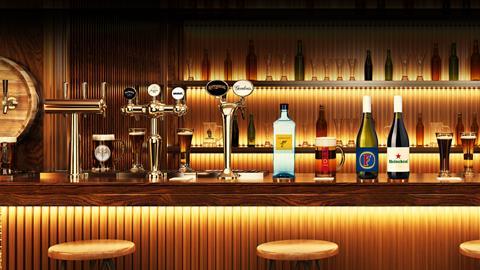

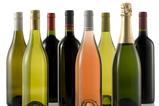

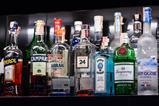


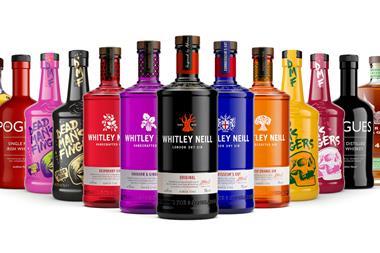





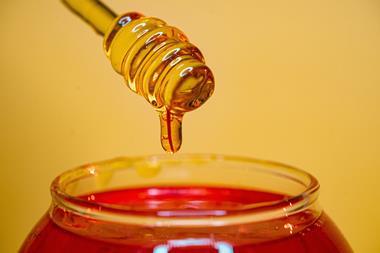
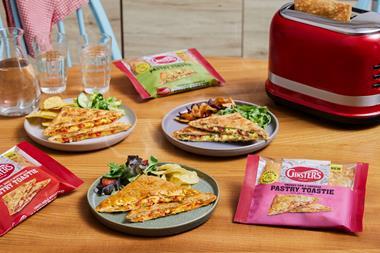

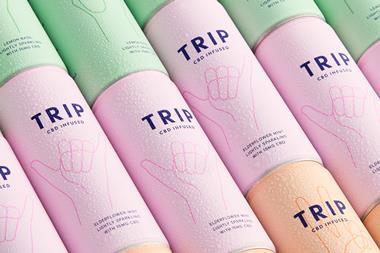
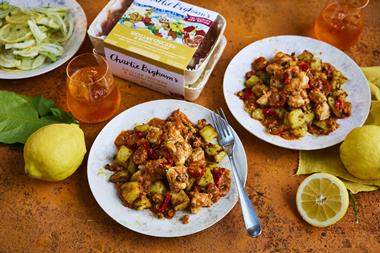
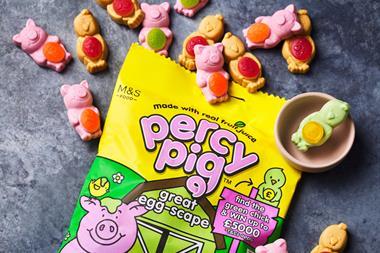
No comments yet